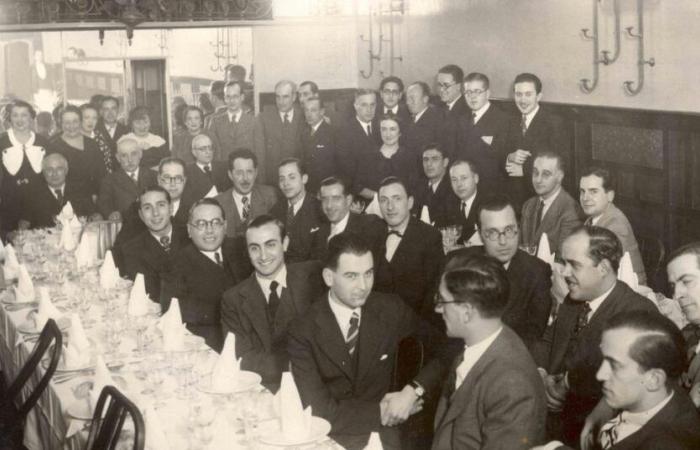Barcelona“Current Catalonia cannot please any young and high intelligence […] The Catalonia Mercado, Jewish, Sanchopanzesca, Mojigata and counterfeit must disappear before an instructed Catalonia, with awareness of its value, with its own education, of free and quite expansive spirit. “This fragment of the article Catalan youth nowwritten by Jaume Brossa (Sant Andreu, 1875 – Barcelona, 1919) and published in the magazine The advance In 1893 he was at the beginning of the chapter that José-Carlos Mainer (Zaragoza, 1944) dedicated to the so-called “regional literatures”-the Catalan, the Basque and the Galician-in a reference essay in the Hispanic world, The silver agefirst published in 1975 in the books of the border by the editor and bookseller José Batlló, even during the Francoist dictatorship, and now recovered by Taurus with a new prologue of the author and an epilogue signed by Jordi Gracia and Domingo Ródenas de Moya.
“The silver age It is still read with the freshness and integrity with which the book was written – it gives grace. It is a complex puzzle of the country’s intellectual life from the beginning of the 20th to 1939. “Mainer wrote it shortly after Falange and literature (Labor, 1971), when he already taught Spanish literature at the university of Barcelona, where he had licensed and doctorate with a thesis on the Galician writer and journalist Wenceslao Fernández Flórez. “I arrived in Barcelona in 1964, just before starting third career,” Mainer remembers. ” “In some dictation he got to get better note than the Catalan students,” adds María-Dolores Albiac Blanco, a career and partner of Mainer, who has also dedicated himself for decades to the study of the history of literature from the university. “José-Carlos and I could have finished the career expedited, but thanks to teachers like Martí de Riquer we end up saving,” recalls Albiac. Both she and Mainer have some of the medievalist’s contradictions: “In 1966, the same year of Capuchinada, Dr. Riquer was able to advise the publication of a newspaper in Catalan and, at the same time, playing it for some students: we knew that he visited the police station of his.”
Solemnly bored manuals
Although at the time they were defined as “Rojos”, Mainer and Albiac ended up being part of the department of Románica led by Martí de Riquer. “I was immediately interested in reading and studying the authors of exile, which I discovered thanks to José Luis Cano, poet, literary critic and one of the founders of the magazine Insula Admit Mainer. Although they were prohibited, it was not so difficult to access their work because many of the Barcelona bookstores had a secret closet with the literature pursued. I think of the old book of the book, the five of gold or a second -hand bookstore of Aribau Street where we spent many afternoons. “” Mainer was raised in the middle of Franco, “says Domingo Ródenas – but, even so, immediately saw, while preparing The silver agethat to rebuild the plot of a cultural process that starts in 1902, he also needed to talk about the literatures with the state’s own language that they were resurfaced. “
-“I always looked for an independent form of expression and at that time the manuals of Spanish literature were solemnly boring,” says Mainer. The silver age was Contemporary Catalan literaturethat Joan Fuster published in 1972 in Curial and that covers from modernism to the sixties of the twentieth century. Also the part of Catalan literature of Mainer’s book starts with the modernist onslaught. As well as in Castilian literature the proposals for change, promoted by a well -known article by Ramiro de Maeztu, Towards another Spain (1899), did not make a hole for “the absence of bourgeois spirit or industrial eagerness” and “the jerky casticism”, as you can read in The silver agethe modernism of Catalan authors such as Santiago Rusiñol, Joan Maragall, Ignasi Iglesias and Víctor Catalán “knew how to insert with a singular coherence in the artistic demand of a hegemonic bourgeoisie, who was progressive at the expense of bourgeois money.”
Praise the “Total Book” of JV Foix
On the pages of the trial of José-Carlos Mainer, other referents of Catalan literature such as Josep Carner, Josep Pla, Joan Salvat-Papasseit and JV Foix parade. Of the latter highlights the project of Diario 1918“conceived as a variant of that Total book who dreamed the symbolism and significantly identical in its titular enunciation to that other diary with which Juan Ramón Jiménez opened similar routes in the world of Spanish lyric poetry. “This is one of the other successes of The silver age: Mainer not only dialogues the various literary traditions of the State, but also inserted them in the European cultural production of the time. I even review the editorial catalogs of the period to see which authors were most present and deduce their possible influence. In 1910, for example, they were very disseminated by Nietzsche, Kropotkin and Renan, but also novels by Tolstoi, Zola, Dickens, Hugo and Dumas.
“Even my book was unthinkable to mention foreign authors in a Spanish literature manual,” says Mainer.. He cites as an example the poetry of Antonio Machado, which for political reasons “was cited until then anecdotally.” If I had the strength and desire to expand the essay, José-Carlos Mainer would have added, among others, Manuel Chaves Nogales and the Sinsame, a name with which the forgotten authors of the generation of 27 have encompassed for a decade, including Luisa Carnés, María Teresa León and Rosa Chacel.






